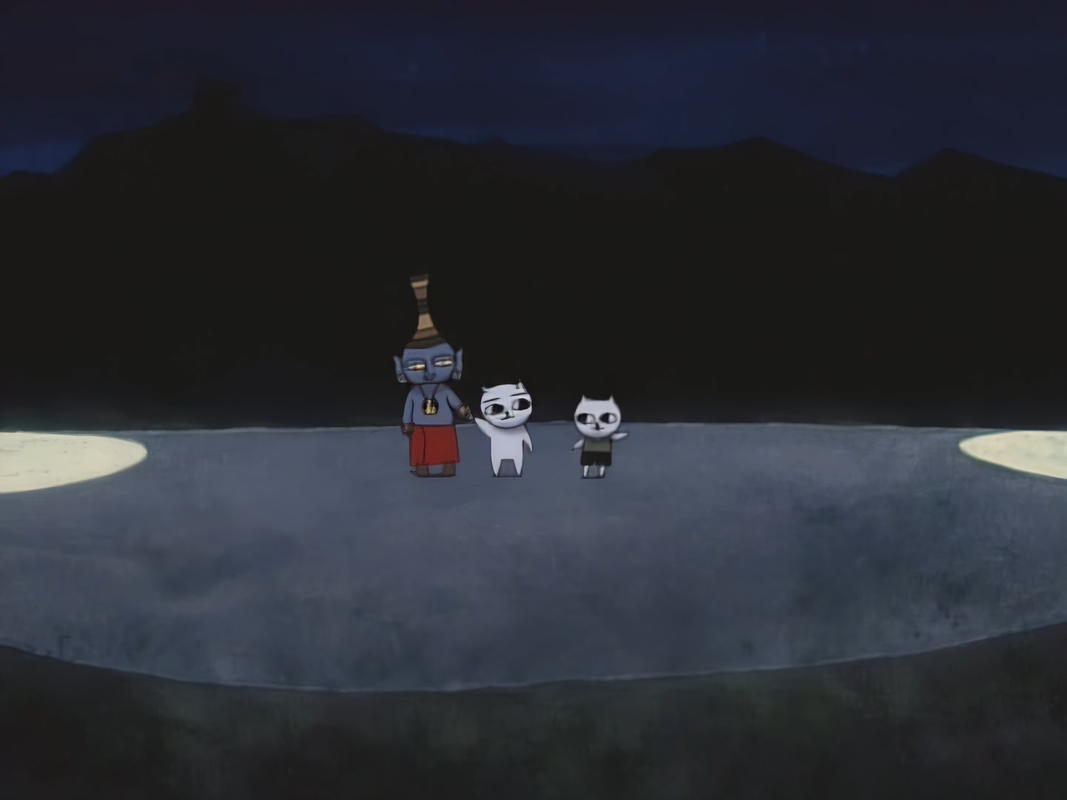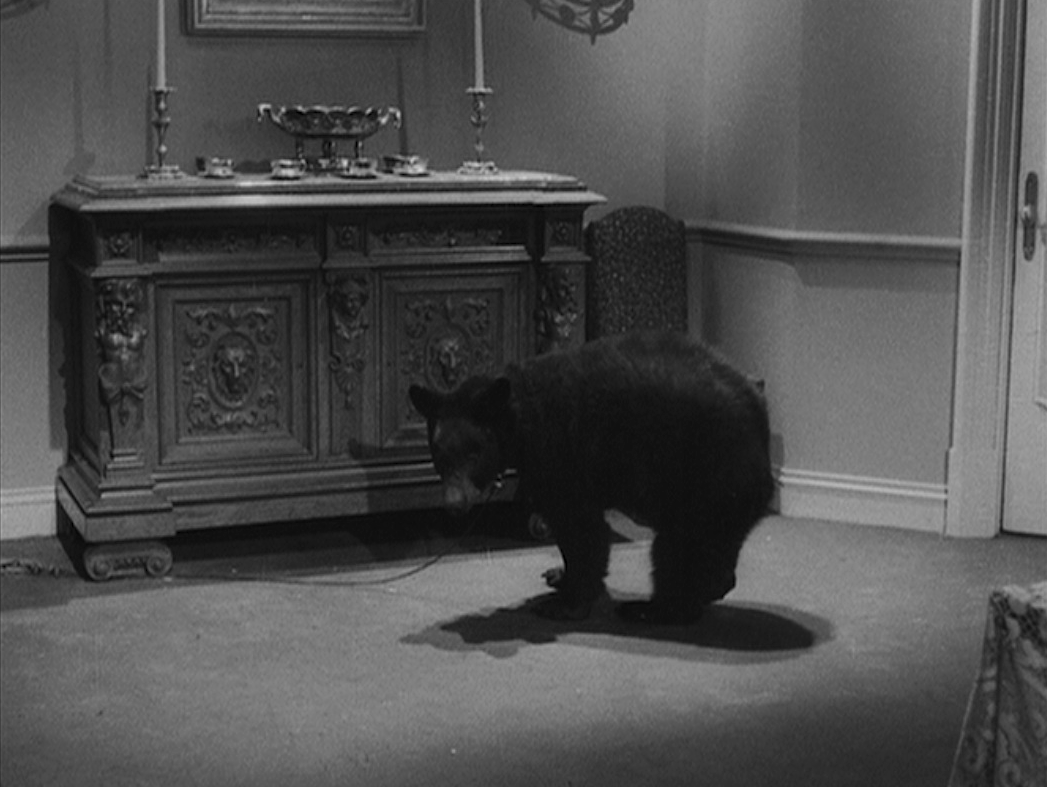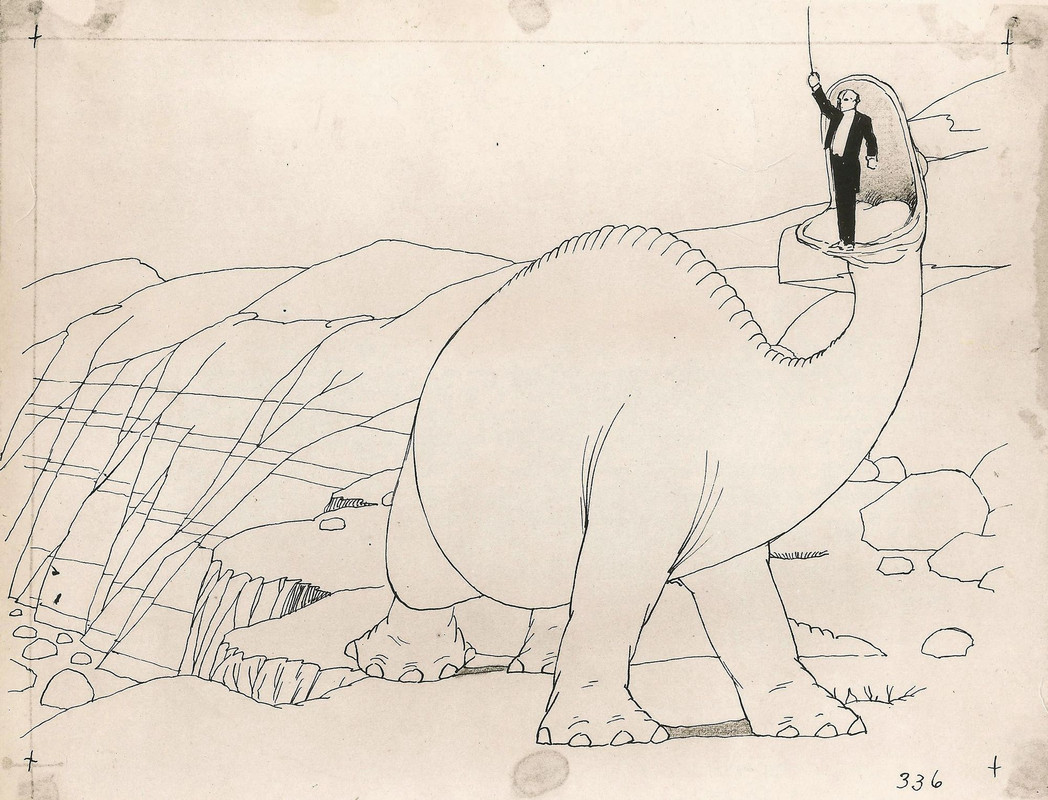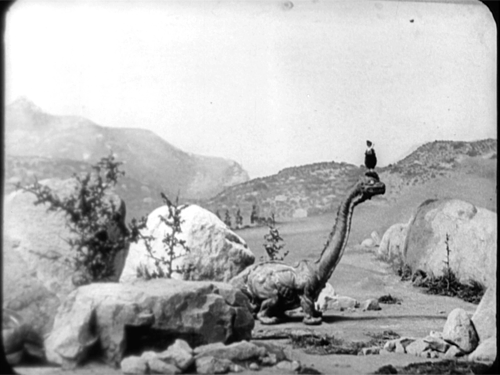La caza [The Hunt] (Carlos Saura, 1966)
Sep
23
International Rabbit Day

One of the hunters, seen from the back, aims for a wild rabbit. When you look closely you can see the animal leap just out of frame. DP: Luis Cuadrado.
animals
Ostia [A Violent Life] (Sergio Citti, 1970)
Sep
11
supper

A group of vulgar looking people eating outdoors at a very long table in front of an old crumbing wall at a very long table. The scene is a re-enactment of Da Vinci's Il Cenacolo / Last Supper. DP: Mario Mancini.
“Are the birds gonna eat us, Mommy?”The Birds (Alfred Hitchcock, 1963)
Sep
10
chicken

Alfred Hitchcock and Tippi Hedren in a promotional photo by Philippe Halsman. Hedren, as her character Melanie Daniels, is attacked by a large crow while Hitchcock calmly enjoys a fried chicken and a glass of wine. DP: Robert Burks.
Feeling rather peckish.
Ostia [A Violent Life] (Sergio Citti, 1970)
Sep
10
National Pet Memorial Day

Bandiera and Rabbino and their beloved Rosina, thoughtfully covered with a woollen blanket. DP: Mario Mancini.
Bandiera and Rabbino, two young bumpkins, find that Rosina, their beloved ewe, has been butchered by their father. Years later, the two share their lives with a beautiful blonde who they found believing to be dead.
ねこぢる草 [Nekojiru-sō / Cat Soup] (Tatsuo Satō, 2001)
Aug
30
National Grief Awareness Day

Nyāko taken away by Jizō with little brother Nyatta telling Nyāko to come back home. DP: Masaru Takase.
Nyatta is not ready to have Jizō take away his big sister Nyāko to Ne-no-kuni, the land of the dead. The kitten grabs his sister's paw, resulting in her soul being ripped in two and leaving Nyāko in a state of limbo. The cats' mother then sends the two off on a mission to buy fried #tofu. Maybe now Nyatta can find a way to put Nyāko's divided soul back together. But first, there's a circus to visit!
ねこぢる草 is based on works by mangaka Nekojiru / ねこぢる (1967—1998) whose trademark crudely drawn #cats caused a ripple in Japan's underground #manga circuit. Nyatta and Nyāko continued their surreal adventures by way of widower Yamano Hajime after Nekojiru's tragic suicide in 1998.
Maléfices [Where the Truth Lies] (Henri Decoin, 1962)
Aug
16
milk

Ronga (Maîthé Mansoura accompanied by cheetah Nyète), sits on a straw-covered floor while holding a bowl with milk. There are potted plants and gardening equipment is placed against the wall. DP: Marcel Grignon.
“Don't you recognise me?”Drak sa vracia [Dragon's Return / The Return of Dragon] (Eduard Grečner, 1968)
Aug
9
Smokey Bear Day

Drak (Radovan Lukavský), a Caucasian man with a rough looking face and an eyepatch over his left eye. The landscape behind him is mere blurs. DP: Vincent Rosinec.
Drak [“dragon” or “devil”] returns to his village. No one understands why he came back, or where he has been. The villagers postulate smugglers and there's other drunk nefarious thoughts, but for sure they know that with the potter, the draught returned. In an unspoken ritual sung in old tongues, the grey women summon the rain. The forest, dry as tinder, has taken the cattle, all there is. Drak knows where the animals went and a deal is struck.
– Drak
Drak sa vracia speaks in mere whispers and smoky greys. The main characters – the #fire, smoke, pottery, and composer Ilja Zeljenka's often silent motif – weave their wordless presence throughout the ancient landscape; that same landscape that carved itself into the locals' being.
Drak sa vracia [Dragon's Return] (Eduard Grečner, 1968)
Aug
6

Eva (Emília Vášáryová) stares into the fire on which a small anthropomorphic cooking vessel is mounted. DP: Vincent Rosinec.
“I love the spontaneity of this situation. If you'd like to spend the night, we'll make up as many rooms as needed. I'm pleased to see the old spirit of improvisation is alive and well.”El ángel exterminador [The Exterminating Angel] (Luis Buñuel, 1962)
Jun
3
National Black Bear Day

A young brown bear in a luxuriously furnished room. DP: Gabriel Figueroa.
As part of a witty surprise, Lucía Nóbile (Lucy Gallardo) arranged a #bear and three #sheep for the lavish dinner party she's thrown for her fellow #opera-loving guests. However, the joke is not appreciated and in the cause of the evening – and a ruined dinner when the staff decides to go even before serving any of the #food – the company find that they cannot leave the salon.
– Edmundo Nobile
While the beasts roam the house, the elite are faced with hunger, primal urges, and no motivation to leave.
Gertie the Dinosaur (1914)
Gertie raises her creator Winsor McCay in her mouth. McCay holds a dressage whip but in his tuxedo resembles a musical conductor more than a lion tamer. DPs: John A. Fitzsimmons & Winsor McCay.

June 1: dinosaurs for #DinosaurDay
Gertie the Dinosaur (Winsor McCay, 1914)
I made ten thousand cartoons —each one a little bit different from the one preceding it.
Long before we all flocked to the movies, there was vaudeville. Vaudeville comes in many flavours, from raucous song and dance, acrobatics (see #BusterKeaton's start) to chalk talk: a live performance in which an artist would chat and draw on a blackboard in real time. The format is perfect to enlighten and entertain an audience, about the dangers of alcohol, the importance of religion, the demand for women's suffrage.
But where there's a scholar, there's a showman. As a chalk talk consists of a succession of quickly drawn illustrations, one flowing into the next while the performer raps over it, the leap to animation is a logical one. In 1914, a brontosaurus named Gertie and a comic strip creator called Winsor McCay travelled the land – both animated and real.
McCay, known for his fantastic comic strips Little Nemo in Slumberland and its predecessor Dream of the Rarebit Fiend, introduced the great animated animal to the audience with little tidbits of knowledge about the mighty brontosaurus, throw her an apple, demonstrate her gentleness by stepping into the screen (a parlour trick made the transition from real to animated look incredibly convincing) and let Gertie carry him around in her prehistoric world. In front of the delighted audience, the showman then would reappear into our realm.
The movies were young and promising, and Gertie's leap to celluloid was made the very same year. Gertie the Dinosaur (1914), an adaptation of the vaudeville act and the first animated dinosaur movie, moves the stage to a dinner party at the animator's studio, where McCay shows off his animation skills as part of a bet.
Gertie, with its combination of animated and real content, had a huge influence on film makers to come. You can see it in Max Fleischer's wonderful Out of the Inkwell cartoons (1918 – 1929) and Ubi Iwerk's Alice Comedies (1923 – 1927, the only original work that ever came out of the Disney studios). And Buster Keaton? In honour of Gertie he rode a claymation brontosaurus in his Three Ages (1923).
The Boy's (Buster Keaton) nifty use of a pre-Willis O’Brien stop-motion Brontosaurus' high vantage point. DPs: Elgin Lessley & William C. McGann.

#Bales2023FilmChallenge #WinsorMcCay #JohnAFitzsimmons #vaudeville #comedy #dinosaurs #animals #animation #ShortFilm #SilentFilm #USA #1910s